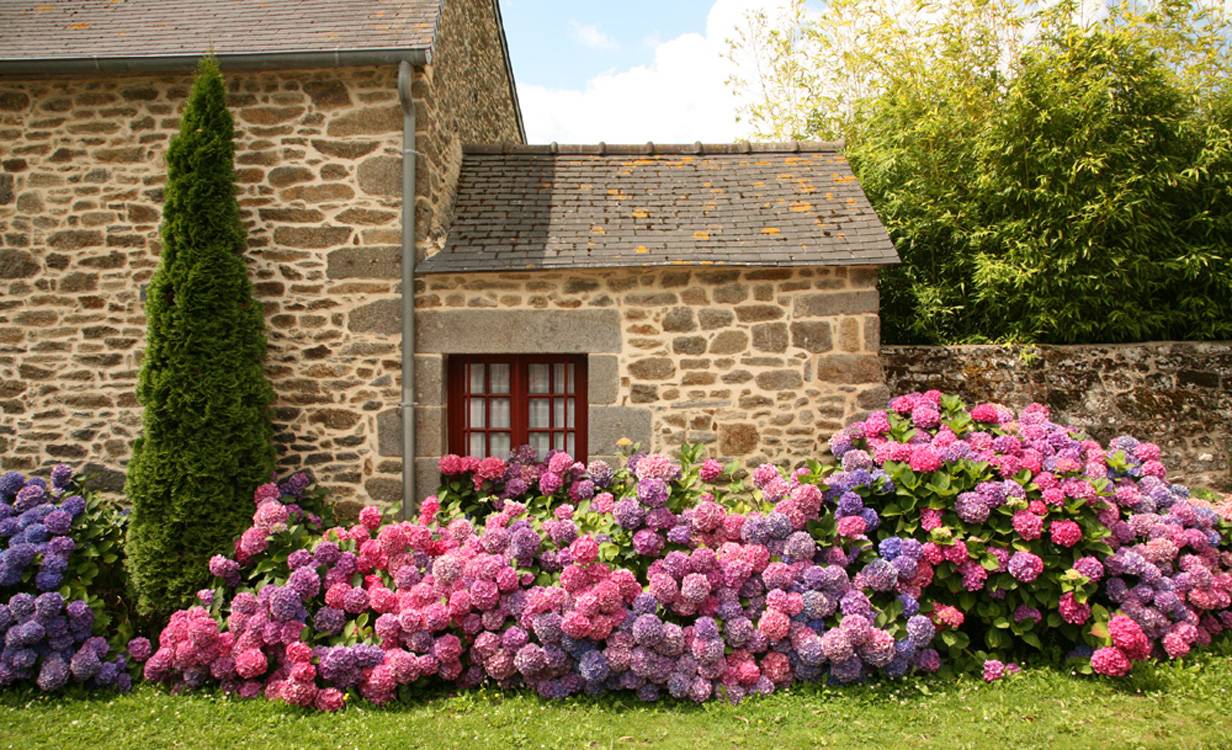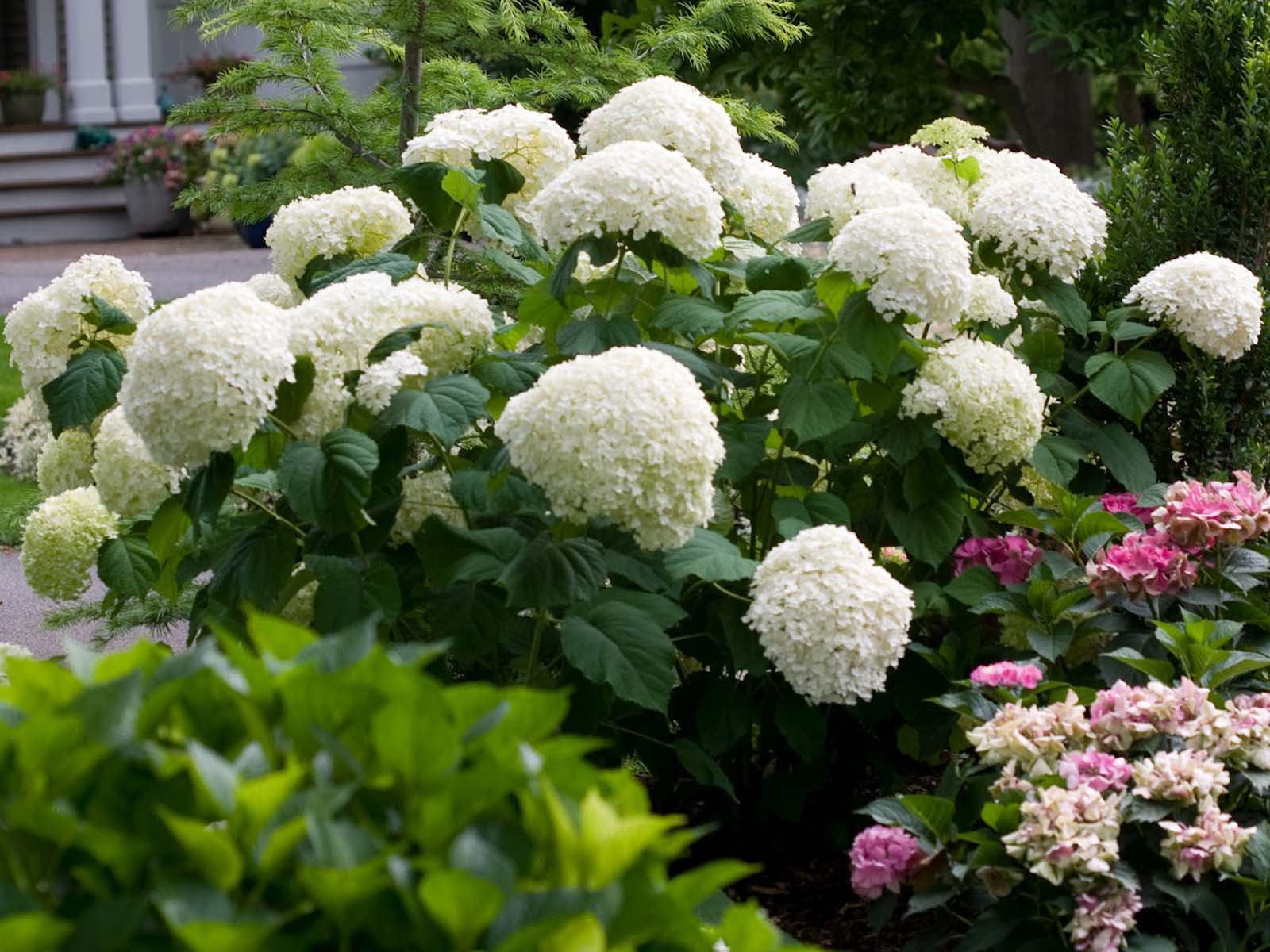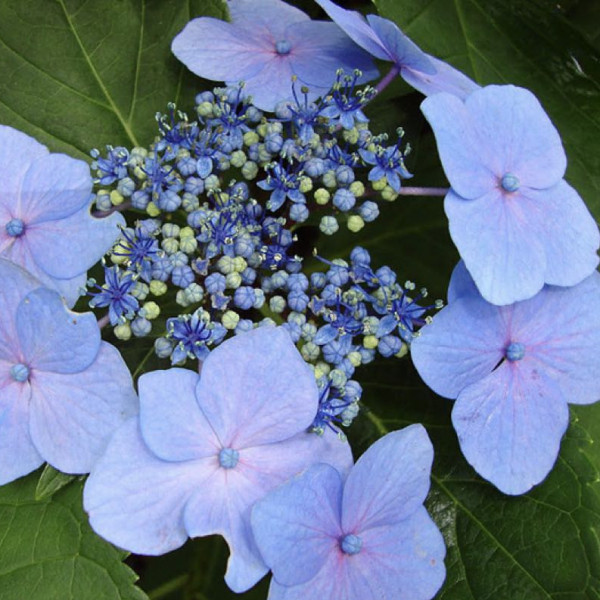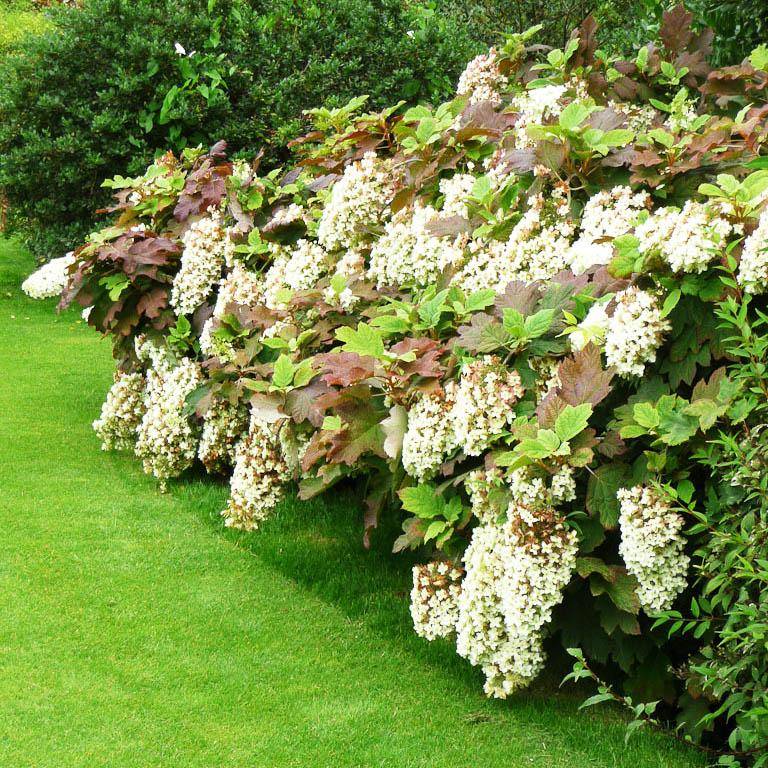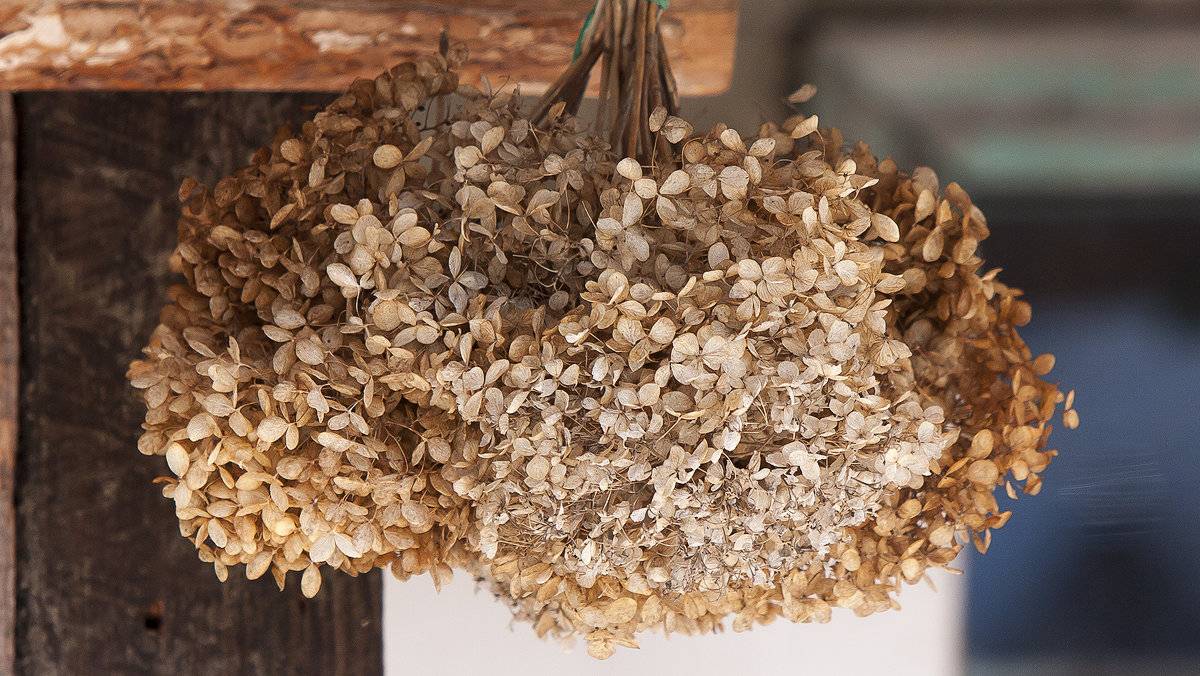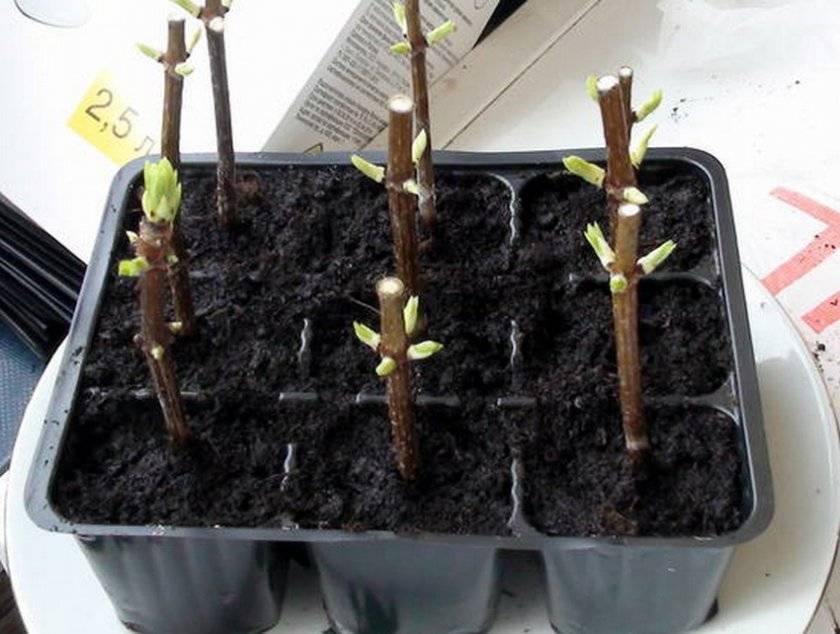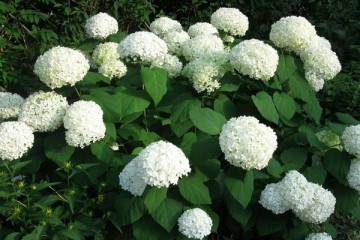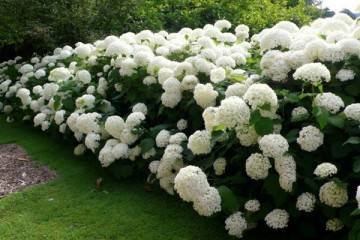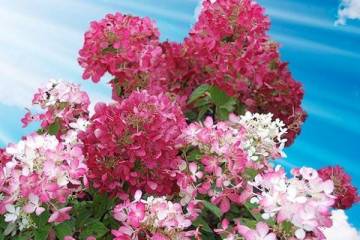Garden hydrangea - planting and care in the open field
Content:
Hydrangea is a romantic flower named after the lady of the heart by the French scientist Fleeber Commerson. The image of a dreamy, beautiful girl is surprisingly suitable for a plant with a dense crown, large leaves and lush inflorescences of pastel shades.
Garden hydrangea - planting and care in the open field
Hydrangea looks like a deciduous shrub with large sprawling, spherical or corymbose inflorescences. The perennial plant is very popular with gardeners. The genus includes about 30 plant species from the south of East Asia and from North America. Their descriptions differ.
Hydrangeas are relatively unpretentious, most varieties endure harsh and unstable winters. But there are also sissies that will have to be taken care of with the onset of cold weather. In this case, the instructions for plant care will help.
In order to decide which type is suitable for decorating your garden, it is worth examining the most popular types.
Paniculata
Winter-hardy plant with long flowering. Decorates gardens even in Siberia and beyond the Urals. The crown is round, the height of the plant is more than 2 m. This type is very effective in the standard form. Leaves are dense, dark green, up to 12 cm long. Inflorescences in the form of convex cream-colored shields. Blooms, like most hydrangeas, all summer. A spectacular variety of this species, Grandiflora, is distinguished by large conical inflorescences up to 25 cm long.
Tree-like
A very common shrub native to North America. Often found in the gardens of the Moscow region. Forms a curtain of erect shoots branching in the lower part. The plant reaches 1.5 m in height. Blooms profusely from mid-July to October. Hydrangea has spherical white inflorescences up to 15 cm in diameter. The Annabelle variety is popular with massive spherical inflorescences, initially green, and then white or creamy.
Large-leaved
Another name is garden. This is a small bush hydrangea from Japan, no more than a meter high. The leaves are large, bright green, shiny. In modern varieties, inflorescences are spherical, large (25 cm), usually pink in shades. Depending on the acidity of the soil, the color of the inflorescences changes.
Blue Wave variety is frost-resistant. Rounded inflorescences with ray-shaped flowers change lilac-pink color to blue when the soil becomes acidic. No less impressive is the white garden hydrangea of the Bride variety.
Groundcover (variegated)
Tall plant with leaves up to 20 cm long. The leaf plates are dark and smooth above, white-tomentose below, with red petioles. The inflorescence scutes are wide, but sparse. The flowers are initially white, but turn pink over time. The Bertschneider hydrangea flower belongs to the ground cover - one of the most resistant to cold and at the same time to drought. Blooms profusely during the summer.
Dubolistnaya
This species is rare, but is gradually gaining popularity. Noteworthy are the unusual leaves of this plant. They reach 20 cm in length and have 5-7 large lobes, like those of oak leaves. The dark green leaves turn red in autumn.Inflorescences are conical, dense. Numerous flowers are white at first, then turn pink. A bright representative is the Snow Flake variety with large double inflorescences that turn pink as they bloom.
How to care for hydrangea in the garden
Hydrangeas are responsive to care. In response to regular watering, loosening and frequent feeding, the plant will make a great garden decoration.
Hydrangeas grow well in sunny areas, but groundcover can also tolerate partial shade. The number, size and density of inflorescences depends on the illumination: the more light, the denser, larger and more spectacular the inflorescences.
Watering mode
Care for a hydrangea flower is easy, with special attention paid to watering. Moisturize plants abundantly. In dry, hot summers, weekly watering is required, and an adult plant takes up to 20 liters of water. In a rainy season, 5 waterings per season are enough.
Top dressing
In spring, hydrangea flowers need complex mineral fertilizers with trace elements. For 1 square meter, you can add 30 g of superphosphate, 20 g of urea and 30 - 35 g of potassium sulfate.
The next feeding is carried out during the budding period. Thus, long-term and abundant flowering is stimulated.
At the end of the season - the third stage of feeding. Add 30 g of potassium sulfate and 50 g of superphosphate per square meter.
Pruning
Until the age of three or four, the hydrangea bushes do not need to be pruned. And mature plants need annual pruning.
Pruning is carried out in the spring, before the start of active sap flow and swelling of the buds. Remove old, damaged and poorly flowering shoots, as well as some young branches. Older shoots are pruned low, leaving two to five buds at the base. In the fall, be sure to remove or cut dry inflorescences for a winter bouquet. For these simple actions, the hydrangea will thank the gardener with exuberant flowering.
Preparing for winter
It is recommended to cover young plants for the winter. Adult specimens are insulated in different ways, depending on the species. Treelike hydrangea can not be covered, but limited to mulching the trunk circle in young plants. Around the panicle hydrangea, the soil is covered with rotted manure or straw.
In the middle lane, large-leaved hydrangea is covered for the winter, and they begin to prepare for this in advance. In early September, watering is reduced, and the lower leaves are torn off to stimulate lignification of the shoots. Before frost, all leaves are cut off, except for the topmost ones, which protect flower buds. The branches are wrapped with a rope and bent to the ground, laid on a wide board or spruce branches. Top covered with leaves and covered with lutrasil.
In mid-May, the leaves are first gradually removed, then the shoots are raised. But at night it is better to cover it with foil, so that return frosts do not damage the plant.
Reproduction of garden hydrangeas
Hydrangeas are propagated by seeds and vegetatively: by dividing the bush, cuttings, layering and offspring.
Cuttings
The most affordable way is propagation by cuttings. In spring or early summer, semi-lignified annual growths are cut into cuttings. For better rooting, sections are treated with heteroauxin. The cuttings are planted in a light mixture of sand and peat, moistened and shaded. Cover the seedlings with a cut plastic bottle with a cork.
Over time, by unscrewing the plug, you can ventilate the cuttings. Rooting takes place within a month. When the seedlings start growing, the bottle is removed.
Seed reproduction
Small, dark brown, oblong hydrangea seeds prepared for sowing should be free from damage or mold. If the seeds are collected independently, they are stored at room temperature in a dry place until spring.
Sowing in open ground can be carried out from April to early June. The earth should warm up well by this time.
Seedlings
Hydrangea is also propagated through seedlings. Seeds are laid out in a container with light soil, without burying them in the ground. The substrate is watered and covered with foil. Shoots appear after 2 weeks. When the plants get stronger, the film is removed.
When the plants reach a height of 8 cm, they are dived again. In good weather, the seedlings are exposed to fresh air for hardening. Two-year-old seedlings can be planted in open ground.
Transplanting hydrangeas outdoors after purchase
If a plant with a closed root system (in a pot) came to the gardener from a domestic nursery, you can not rush to plant it. In the case when a foreign copy is purchased, it must be transplanted as soon as possible. Plants arriving from abroad are not in the ground, but in a special transport substrate, which cannot provide the hydrangea's needs for a long time.
The best time for transplanting outdoors is spring. Plants are planted as soon as the soil is fully warmed up. You can plant a plant in summer, but the buds crumble and there will be no flowering. And in the southern regions, hydrangea is successfully planted in open ground in the fall. In warm climates, she manages to adapt before the onset of cold weather.
Better to land in cloudy weather. Fertilizer mixed with soil is applied to the prepared hole, a bush is placed there and sprinkled with an earth mixture. The plant is watered abundantly.
Everything that has been said about hydrangea above convinces us that growing in the garden and caring for this plant at home is not difficult. Gardeners love hydrangea for its long exquisite flowering, delicate color of airy inflorescences and resistance to diseases. In landscape design, it is used to create spectacular flower beds and to form a hedge. Miniature decorative specimens are grown as tub plants, decorating terraces and balconies with them.
